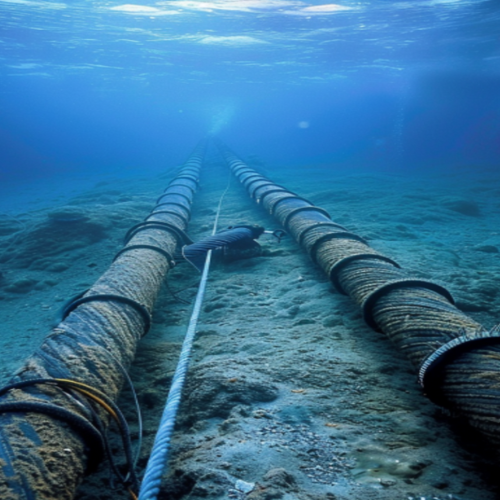Underneath the oceans lies a vast network of undersea cables that carry almost all the internet data in the world. These cables are the backbone of the internet, handling financial transactions, emails, and even video calls. While they seem invisible to most people, they are a major part of global power struggles. Recently, China’s growing control over these cables and the systems that direct internet data has raised alarms worldwide.
Control of Data Pathways
When you use the internet, the data you send doesn’t always take a direct path to its destination. Instead, it travels through a series of cables based on a system of rules and decisions called routing protocols. These protocols decide the speed, cost, and even the level of security of your data’s journey. One advanced technology behind these decisions is called Software-Defined Networking (SDN). SDN is very smart—it can change data routes in real time to make them faster or more efficient.
However, this flexibility also makes it risky. If someone controls these systems, they can manipulate where data goes, slowing it down, spying on it, or even blocking it altogether. China has invested heavily in SDN technology, and companies with strong ties to its government are leading in this field. Through these tools, China can secretly redirect internet traffic through its own networks, even when the data wasn’t supposed to pass through its territory.
For example, a cable called PEACE connects Europe and Africa. Although it avoids China physically, SDN can still allow traffic from this cable to be redirected through Chinese-controlled systems. Even a small delay in routing can harm industries like financial trading, where milliseconds matter.
China’s Deceptive Tactics: The Dangerous Use of Disguised Fishing Boats in the South China Sea
In another case, data from Southeast Asia, meant for Japan, was mysteriously routed through Hainan Island in China during tense political times. This shows how data routing can be influenced by politics, not just technology.
Surveillance Through Cable Repairs
Undersea cables are delicate and occasionally need repairs. Special ships are sent out to fix them, but this process exposes the cables and the equipment that boosts their signals. China controls many of these repair ships, especially in regions like the South China Sea, where much of the world’s internet traffic passes.
These repair ships are equipped with advanced tools, including robots and precision cutters. While their main job is to fix cables, they can also secretly install devices that spy on internet traffic. This is a serious concern because these ships operate in international waters, where rules are weak and oversight is limited.
China’s expertise in technologies like quantum communication and artificial intelligence makes it even easier for them to exploit cable vulnerabilities. For instance, they could use advanced tools to collect encrypted data passing through cables and try to decode it later.
In one incident in the South China Sea, Chinese repair ships worked on a cable for weeks without transparency. This raised questions about whether they were only fixing the cable or doing something more covert.
The problem is worsened by the fact that many Western countries, including the United States, rely on private companies for cable repairs. These companies often lack the resources and protections to operate in contested areas like the Indo-Pacific, leaving a gap that China has filled with its state-supported fleet.
Mapping the Seabed for Power
Another overlooked area of control lies in mapping the ocean floor. Subsea maps are critical for laying undersea cables, tracking submarines, and finding resources. China has been aggressively mapping the ocean floor, collecting valuable data in regions like the South China Sea, the Arctic, and the Indian Ocean.
Indonesia Denies Overlap in South China Sea; Boldly Rejects Disputed Claims with China
Chinese research vessels and underwater robots have mapped these areas with incredible detail, often under the pretense of scientific exploration. This data helps China plan submarine routes, position sensors, and even deploy underwater weapons. For instance, in areas like the Strait of Malacca, where a large amount of global trade flows, having detailed seabed maps gives China a military and economic edge.
China has also used seabed mapping to gain influence in smaller countries. It offers its mapping services in exchange for access to their waters, but the data collected often serves dual purposes, helping both civilian projects and military objectives. In one case, a Chinese vessel collected sensitive data near Vietnam, leading to tensions in the region.
Moreover, China has worked on undersea cable projects in nations like Papua New Guinea and the Solomon Islands. Concerns about potential spying ledCable Wars: The Alarming Power Shift Beneath the Seas countries like Australia to step in and fund these projects themselves. This highlights how other nations are wary of giving China access to critical undersea infrastructure.
The Silent Weapon
China’s control over undersea cables, repair fleets, and seabed data reveals a new kind of power struggle. These hidden systems might not be visible to most people, but they are vital to how the world communicates and operates. By dominating these areas, China has gained a significant advantage in surveillance, geopolitics, and military strategy. Whether it’s redirecting data, installing surveillance devices during repairs, or mapping the ocean floor for strategic gain, this quiet control is reshaping the balance of global power.


